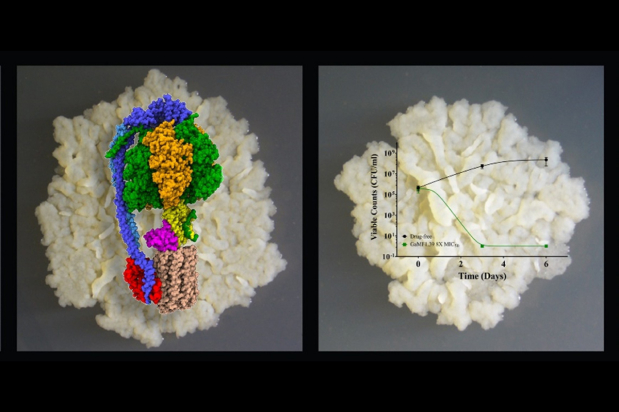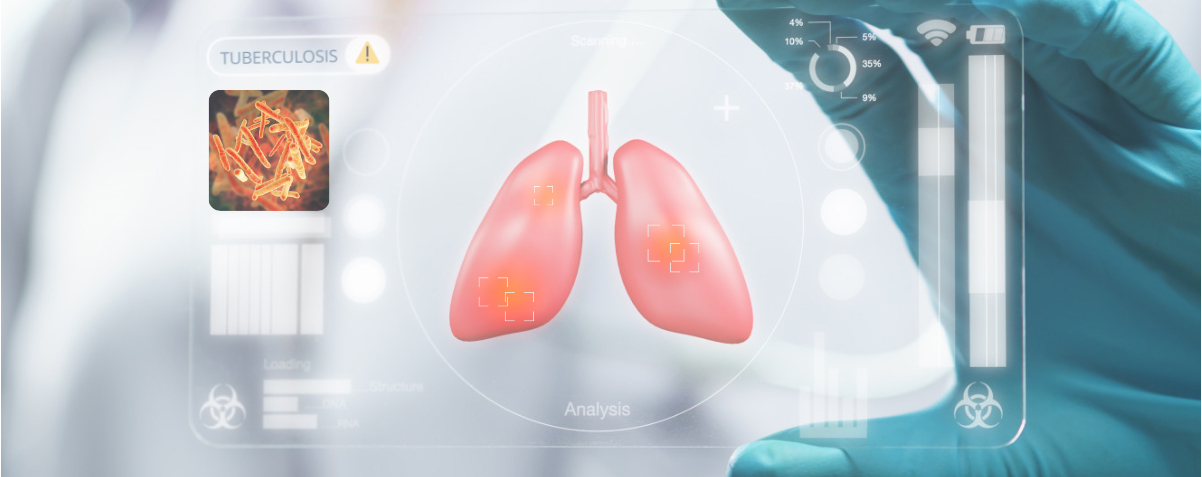This is adapted from the Press Release issued by NTUitive
The World Health Organisation1 estimates that over 1.5 million people die from tuberculosis (TB) worldwide, making it the second leading infectious disease killer after COVID-19.
Caused by the bacterium Mycobacterium tuberculosis, TB is an infectious disease that has plagued humankind for more than 70,000 years2, with an estimated 10 million new cases of TB annually. With multidrug-resistant TB causing outbreaks in both developing and developed nations, new treatments are urgently required to tackle this infectious disease.
Just last month in Singapore, the Ministry of Health announced that 170 people had tested positive for TB in a large cluster3. TB is endemic in the developed city state and the prevalence of TB infection can be as high as 29% among those aged 70 to 79 years.
To address this escalating medical concern, a series of chemical-based compounds with the potential to be drug candidates against TB has been developed in Singapore. These compounds are developed by a joint team from Nanyang Technological University, Singapore (NTU Singapore) and the Experimental Drug Development Centre (EDDC), Singapore’s national drug discovery and development platform hosted by the Agency for Science, Technology and Research (A*STAR).
Neuro-Horizon Pharma LLC (NHP), a US-based drug development company, has licensed the compound for commercialisation through NTU’s innovation and enterprise company, NTUitive, which led the commercialisation efforts.
This discovery was made possible through a transdisciplinary platform called TOPNet (Targeting Oxidative Phosphorylation Network) that is supported by the National Research Foundation Singapore4 (NRF Singapore). TOPNET is led by NTU Professor Dr Gerhard Grüber in collaboration with EDDC and Prof Thomas Dick from the Center for Discovery and Innovation Hackensack Meridian Health (CDI) in the US.
These small molecule compounds were shown to inhibit a key enzyme used by the TB bacterium to produce ATP, an important molecule that is the primary source of energy for living cells. At the molecular level, this ATP-producing enzyme is akin to a nano-sized Wankel5-like rotary motor that turns to convert energy from one type to another type. If the ATP-enzyme stops running, the ATP production process and the resulting energy supplied to the TB bacterium will be disrupted. This can be likened to how a car comes to a halt when its engine stops.
The path to the discovery and design of these small molecules was paved by earlier NTU studies on the metabolism of drug-resistant TB, done by Prof Grüber, Assoc Prof Roderick Wayland Bates from the School of Physical and Mathematical Sciences and Assoc Prof Kevin Pethe,Provost’s Chair in Infectious Disease at the Lee Kong Chian School of Medicine.
The researchers then combined their expertise in structural biology, mycobacterial physiology, bioenergetics, and drug discovery, with EDDC’s expertise and experience in drug design and medicinal chemistry, to successfully develop the lead series of small molecule inhibitors.
Professor Damian O’Connell, Chief Executive Officer of EDDC, said, “As Singapore’s national drug discovery and development platform, EDDC works with key players in the local ecosystem to translate R&D into medicines that address unmet needs, and drive better health outcomes for society. EDDC is proud to partner with NTU in the development of these small molecule inhibitors, and we look forward to NHP progressing these molecules as drug candidates for tuberculosis patients.”
1World Health Organization. (n.d.). Tuberculosis (TB). World Health Organization. Retrieved July 5, 2022, from https://www.who.int/news-room/fact-sheets/detail/tuberculosis
2Barberis I, Bragazzi NL, Galluzzo L, Martini M. The history of tuberculosis: from the first historical records to the isolation of Koch’s bacillus. J Prev Med Hyg. 2017 Mar;58(1):E9-E12. PMID: 28515626; PMCID: PMC5432783.
3Chew, E. (2022, June 25). Singapore Widens Tuberculosis Checks After Large Cluster Emerges. Bloomberg.com. Retrieved July 6, 2022, from https://www.bloomberg.com/news/articles/2022-06-25/singapore-widens-tuberculosis-checks-after-large-cluster-emerges
4NRF Research Grant Number: NRF–CRP18–2017–01
Note to Editors

